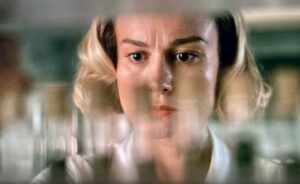4.8 out of 5 stars
As someone who hasn’t read Louisa May Alcott’s “Little Women,” or seen the original film adaptation of the classic novel, I went into the theater to see the most recent version of it on the big screen with expectations I’d derived only from Twitter and my previous experiences with director Greta Gerwig’s work. So this review comes with no relationship to the plot, characters or original screen adaptation, and as the viewer, Gerwig built the story from scratch; and she did so beautifully and colorfully. The movie features a star-studded cast and leaves viewers with a connection to each character and a feeling of empowerment for women, young artists and anybody who wants to fall in love.
The movie follows Jo, played by Saoirse Ronan, through her attempts to get published at a time when this was not common for women. The beginning of the movie clearly lays out this issue, for those who, like me, are new to the plot and the setting. Meeting with publishers, Jo immediately finds that her stories will need to adhere to the unwritten social rules of the time if she wants to make a living from her work. Women must behave properly and have the ultimate goal in life of getting married. Throughout the movie, women’s lack of civil rights and their inability to earn a living for themselves are emphasized repeatedly from each character.
While the movie displays Jo’s talent and desire to stray from the path that’s paved for women at this time, it also paints a picture of family and the love that can sometimes exist under a single roof. The March family, with Jo’s three sisters, played by Florence Pugh, Eliza Scanlen and Emma Watson, exudes warmth and belonging. There are typical family issues, such as envy between sisters, and tragedies that make it very clear that the love among family far triumphs other trivial issues. Jo’s siblings, each with their own very distinct personalities, play different roles in the family, demonstrating how the relations between the March family as a whole are complex and dynamic; this effect leaves viewers wishing they could be a part of it all.
I did find myself slightly confused when the movie jumped back and forth in time. With a cast of mainly young men and women and a time-lapse of only a few years, the characters look nearly the same at all points in the movie, making following the timeline a challenge.
Overall, Gerwig’s adaptation is a work of art that takes you through love and loss, the ups and downs of family and sisterhood, and, perhaps most importantly, the determination of a young woman far ahead of her time.











